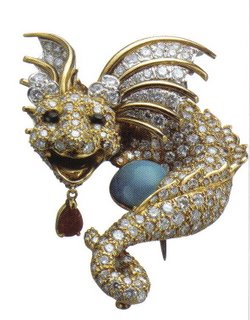Ciao, Roma
We spent the week of 18 September, including Chuck's birthday, in Rome, where Chuck was attending the 26th Symposium on Naval Hydrodynamics (don't you wish you could attend these conferences?). The organizers had planned conferences for the "accompanying persons" on Monday, Tuesday and Thursday of the week.
We know many of our readers will be familiar with many Roman landmarks, either through personal visits or just as a result of their wide familiarity. But we will include a short listing of some of the places we visited. You can see some pictures at: http://chuck.smugmug.com/gallery/1923852.

On a previous visit to Rome both of us had visited the Villa Borghese, which now houses many great art treasures, including some Bernini sculptures which we think are among the best in the world. We both had our breath taken away by the life-size work of Apollo and Daphne, shown here. Kathi, along with many of the ladies accompanying their husbands to the conference, visited the Villa again and came away as impressed as she was the first time. Take a close look at the photo; the drapery, Daphne's hair, the leaves of the tree -- it's hard to believe these are made of marble. One can't help but think "what if the chisel had slipped?"
On our second evening in Rome we had dinner with three of Chuck's colleages at Alfredo's restaurant, recommended by the hotel's concierge. Before taking our order, the waiter gave us a short oral history of the restaurant, founded in 1914. It seems Alfredo had a recipe for fettucine that was very much appreciated by some of his patrons, including Douglas Fairbanks (Sr.) and Mary Pickford. After tasting it, they presented him with a golden fork and spoon and undertook to tell all their Hollywood pals about Fettucine Alfredo. The waiter insisted that if we had had the dish anywhere else it wasn't authentic, as at Alfredo's they use only the fettucine, butter and sliced parmesan cheese. Two of the five of us ordered it and both agreed it was the best Fettucine Alfredo they'd ever had.
Other day tours included "The Piazzas of Rome", which included the Palazzo Montecitorio, by Bernini (now the home of the Italian Parliament), the Pantheon, Campo dei Fiori (the ancient flower market) and many other glorious sites. The tour of Papal Rome included, of course, the Vatican, St. Peter's Basilica, the Vatican Museum, the Sistine Chapel and other points. One of the most interesting sites was the ruins of Pompei, buried for centuries under the ash from the eruption of Mt. Vesuvius in 79 A.D. Excavation of the site started in 1749 and continues today, now including some 160 acres.
We know many of our readers will be familiar with many Roman landmarks, either through personal visits or just as a result of their wide familiarity. But we will include a short listing of some of the places we visited. You can see some pictures at: http://chuck.smugmug.com/gallery/1923852.

On a previous visit to Rome both of us had visited the Villa Borghese, which now houses many great art treasures, including some Bernini sculptures which we think are among the best in the world. We both had our breath taken away by the life-size work of Apollo and Daphne, shown here. Kathi, along with many of the ladies accompanying their husbands to the conference, visited the Villa again and came away as impressed as she was the first time. Take a close look at the photo; the drapery, Daphne's hair, the leaves of the tree -- it's hard to believe these are made of marble. One can't help but think "what if the chisel had slipped?"
On our second evening in Rome we had dinner with three of Chuck's colleages at Alfredo's restaurant, recommended by the hotel's concierge. Before taking our order, the waiter gave us a short oral history of the restaurant, founded in 1914. It seems Alfredo had a recipe for fettucine that was very much appreciated by some of his patrons, including Douglas Fairbanks (Sr.) and Mary Pickford. After tasting it, they presented him with a golden fork and spoon and undertook to tell all their Hollywood pals about Fettucine Alfredo. The waiter insisted that if we had had the dish anywhere else it wasn't authentic, as at Alfredo's they use only the fettucine, butter and sliced parmesan cheese. Two of the five of us ordered it and both agreed it was the best Fettucine Alfredo they'd ever had.
Other day tours included "The Piazzas of Rome", which included the Palazzo Montecitorio, by Bernini (now the home of the Italian Parliament), the Pantheon, Campo dei Fiori (the ancient flower market) and many other glorious sites. The tour of Papal Rome included, of course, the Vatican, St. Peter's Basilica, the Vatican Museum, the Sistine Chapel and other points. One of the most interesting sites was the ruins of Pompei, buried for centuries under the ash from the eruption of Mt. Vesuvius in 79 A.D. Excavation of the site started in 1749 and continues today, now including some 160 acres.






